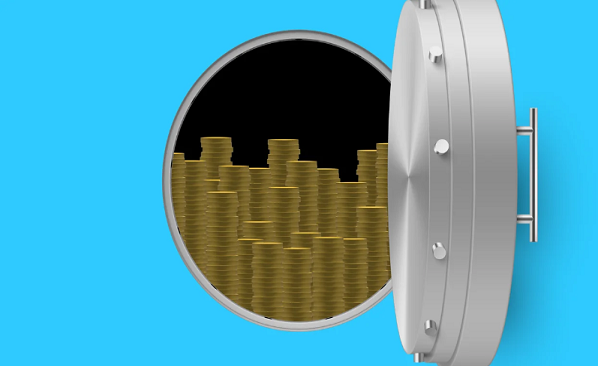Proof of Reserves or ‘PoR’ is one of the latest ideas in the crypto industry aimed at bolstering transparency regarding the safety of user funds. The proof-of-reserves concept can be traced back to late 2022 when Changpeng Zhao (CZ), CEO of Binance, the world’s leading digital assets exchange and largest blockchain ecosystem, advocated it.
Notably, proof of reserves came at a time when trust in centralized exchanges and other crypto-custody platforms became extremely shaky following the series of unprecedented blowups in the nascent industry, including Sam Bankman-Fried’s FTX, Celsius Network, Voyager, and crypto-hedge fund Three Arrows Capital (3AC) among others. The November implosion of the then-second-largest crypto exchange, FTX, which left many customers badly wrecked further intensified the need for more transparency from crypto firms.
Consequently, the public disclosure of centralized exchanges’ reserves became one of the many yardsticks considered by users to trust or patronize this category of digital assets trading platforms, including Binance and Coinbase, among others.
Still not familiar with what proof of reserves means, how it works, its advantages, and its roles in achieving crypto mass adoption? This article got you covered.
What is proof of reserves?
To ‘proof’ means to show evidence while in financial accounting ‘reserve’ denotes a company’s credit balance and can refer to a part of shareholders’ equity, a liability for estimated claims. From the foregoing and as the name implies as well as in the context of the crypto industry, proof of reserves is a concept that involves the public disclosure of a centralized cryptocurrency exchange’s balance sheet regarding customers’ deposited funds, usually done by a third-party auditor.
In other words, proof of reserves is a method through which exchanges attest that assets left in their custody by customers are fully backed 1:1 and can be withdrawn or accessed anytime users wish to. Therefore, when a user deposits one bitcoin (BTC) or Ether (ETH) on a trading platform, it is expected that the exchange’s reserves should increase by at least one BTC or ETH. It becomes a matter of concern if this does not happen.
More so, proof of reserves ensures that customers’ funds are secured and 100% backed. It is, therefore, essential that customers’ funds and the company’s corporate funds are saved on a separate ledger. Both must not commingle.
Why proof of reserves?
Proof of reserves is vital if crypto exchanges, lending companies, and other custodians of assets must be trusted. It is one of the tools through which customers access and assess the solvency and liquidity levels of crypto exchanges.
Proof of reserves also compels many centralized exchanges (CEXes) to be more transparent with customers’ funds. In turn, the concept ensures that companies do not mishandle users’ funds or engage in unlawful activities such as using customers’ funds to trade as in the case of the imploded FTX and Alameda Research, or unduly invest in other businesses.
With proof of reserves, CEXes will no longer operate like conventional banks that loan clients’ deposited funds to third parties to make profits. Altogether, PoR eliminates cryptocurrency exchanges’ risk of insolvency by ensuring that deposited assets are always intact and backed.
These are just some of the reasons and advantages of the novel idea—proof of reserves.
How is proof of reserves conducted?
The proof of reserves, which is an auditing mechanism to verify whether or not an exchange holds the same amount of assets as deposited by customers, is usually handled by an independent and reputable auditing company.
In the first step, the auditor assesses whether an exchange is in possession of all the assets put in its custody by customers. This is done by taking a snapshot of the exchanges’ balances and organizing it into a data structure known as ‘Merkle Tree.’ A Merkle tree is defined as a data structure used to verify the integrity of data in a set.
Secondly, the auditor compares the total assets held by the exchange against the total assets held by all users on the platform. Here, the auditing company takes a snapshot of all individual account balances using their unique signatures.
Technically, what happens here is that users’ account balance data is hashed into something called a “leaf”. A group of these “leaves” are then hashed to form a “branch”. By hashing a group of “branches”, the “root” of the”Merkle tree is formed. Meanwhile, the Merkle root is the tamper-proof cryptographic fingerprint that auditors can access to verify the balance information.
At this point, if the exchange’s total balance (Merkle tree data) tallies with the exact amount of total customer assets per their aggregated account balances for each of the audited assets, such exchange is said to have shown proof of reserves.
To complete the auditing process, the auditor must develop a tool that enables individual users to privately crosscheck that their balances were included in the issued proof of reserves.
Challenges and Limitations of Proof of Reserves
Although proof of reserves is a positive introduction in the developing industry, it still does not perfectly reflect the integrity of a crypto exchange. So, what are some of the key limitations of proof of reserves?
First, proof of reserves audit does not use real-time data. It is just a one-time exercise that uses the available data at a given point in time. Meanwhile, there is always a constant inflow and outflow of assets on exchanges by users which nullifies a one-time auditing result. Furthermore, considering that the auditing exercise is not conducted in real-time, an exchange could borrow funds elsewhere or temporarily make assets available just to scale through the one-time auditing.
Also, there is a tendency for proof of reserves results to be falsified or wrongly represented. In a case where an exchange colludes with its auditor, the published proof of reserves data could be compromised. Likewise, employing an incompetent auditing firm could lead to the production of wrong outcomes.
So this leaves room for more improvements to be onboarded regarding the conduct of proof of reserves. Interestingly, Vitalik Buterin, the Ethereum blockchain co-founder hinted at a future agenda to build a proof-of-reserves protocol, using Binance, the largest cryptocurrency exchange by 24 hours trading volume as the ‘guinea pig’ (test run).
In Summary
Proof of reserves is the public attestation of an exchange’s holdings in line with the total assets deposited on the platform by customers in a manner that users’ privacy is safeguarded. Typically, proof of reserves involves a snapshot and counter-balancing of customers and exchange balances by an external auditing company in the form of a Merkle tree. The Merkle tree data structure which is privacy-optimized equally allows customers to independently verify the inclusion of their assets in the proof of reserves results.
Even though proof of reserves is embattled with several challenges and limitations, it has become the minimum condition for centrally-controlled crypto exchanges to show transparency and earn customers’ trust. It is believed that transparency and security of user funds are critical to gaining crypto mass adoption and reducing avoidable scrutiny or hostile policies from government regulatory entities. As a crypto user, you should be interested in whether the centralized crypto exchange(s) you use or store your funds—particularly if you store your funds on an exchange—has completed proof of reserve. Never take anyone’s word for it. Verify.
Credit: Ndianabasi Tom
A crypto journalist and content writer who has been talking about cryptocurrency and blockchain technology since 2018, Ndianabasi is a Writer at Crypto Asset Buyer (CAB).
Featured image credit: VikiVector/Getty Images
Discover more from Crypto Asset Buyer
Subscribe to get the latest posts sent to your email.




